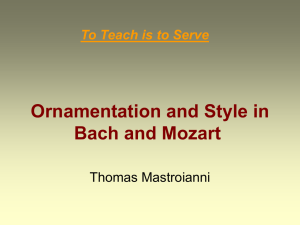Chapter 9: Baroque Instrumental Music
advertisement
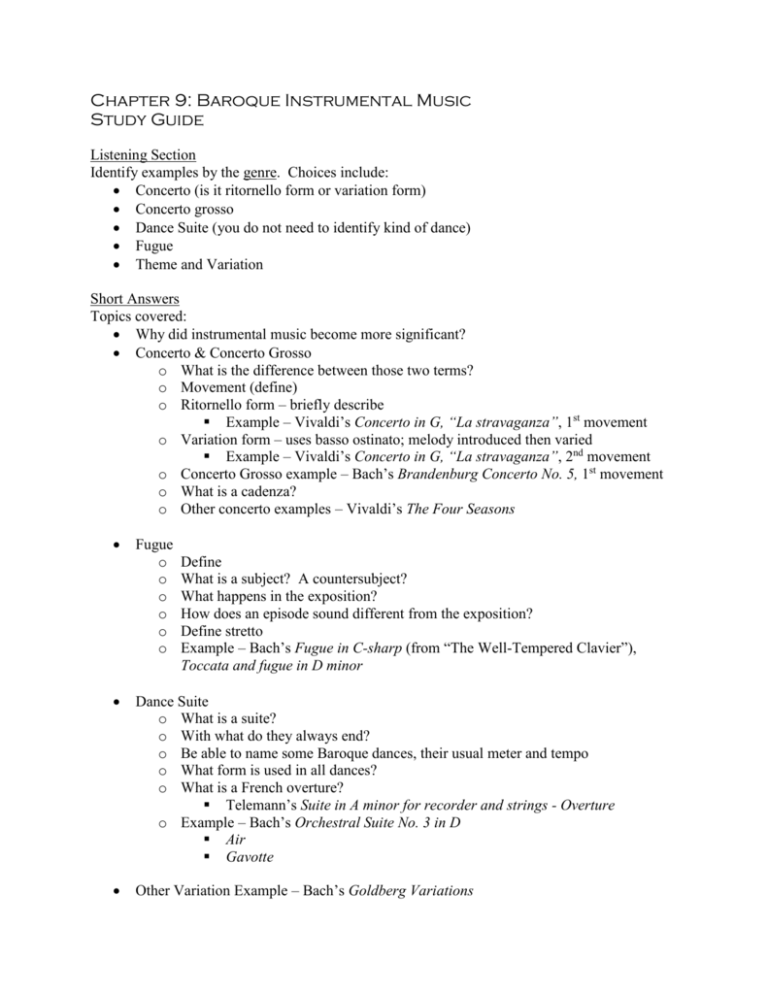
Chapter 9: Baroque Instrumental Music Study Guide Listening Section Identify examples by the genre. Choices include: Concerto (is it ritornello form or variation form) Concerto grosso Dance Suite (you do not need to identify kind of dance) Fugue Theme and Variation Short Answers Topics covered: Why did instrumental music become more significant? Concerto & Concerto Grosso o What is the difference between those two terms? o Movement (define) o Ritornello form – briefly describe Example – Vivaldi’s Concerto in G, “La stravaganza”, 1st movement o Variation form – uses basso ostinato; melody introduced then varied Example – Vivaldi’s Concerto in G, “La stravaganza”, 2nd movement o Concerto Grosso example – Bach’s Brandenburg Concerto No. 5, 1st movement o What is a cadenza? o Other concerto examples – Vivaldi’s The Four Seasons Fugue o o o o o o Define What is a subject? A countersubject? What happens in the exposition? How does an episode sound different from the exposition? Define stretto Example – Bach’s Fugue in C-sharp (from “The Well-Tempered Clavier”), Toccata and fugue in D minor Dance Suite o What is a suite? o With what do they always end? o Be able to name some Baroque dances, their usual meter and tempo o What form is used in all dances? o What is a French overture? Telemann’s Suite in A minor for recorder and strings - Overture o Example – Bach’s Orchestral Suite No. 3 in D Air Gavotte Other Variation Example – Bach’s Goldberg Variations
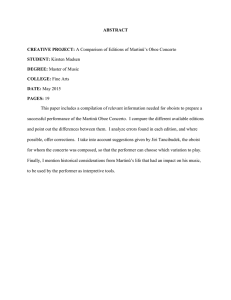
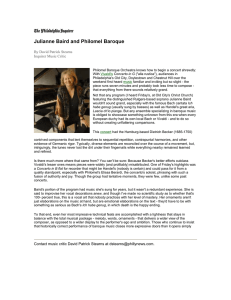
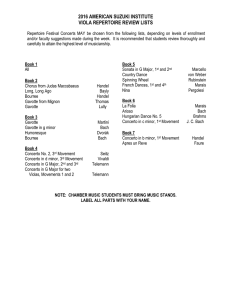
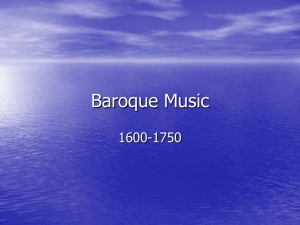
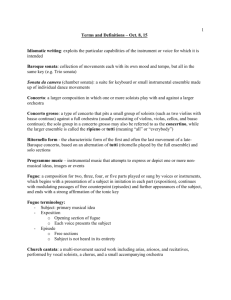
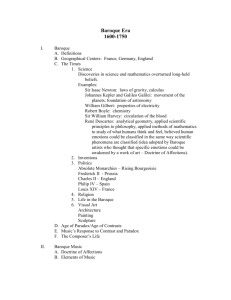
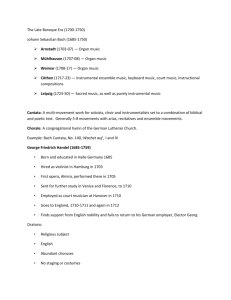
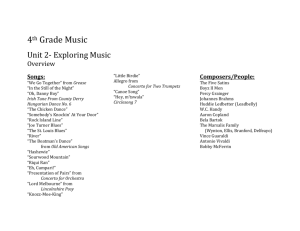
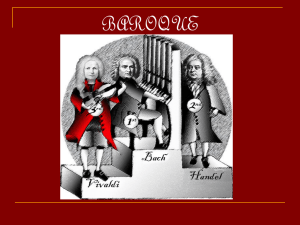
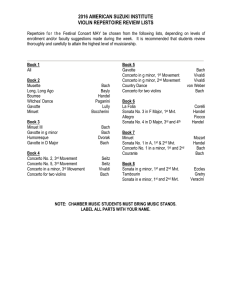
![QUESTION 6: Beatles [10]](http://s3.studylib.net/store/data/009758860_1-f81f55c5d34e2cd1e7ecfb9d98335c8f-300x300.png)
